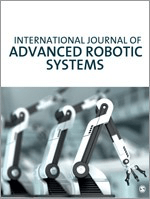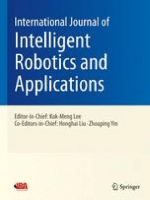
Soft Robotics
metrics 2024
Pioneering Research at the Frontier of Soft Robotics.
Introduction
Soft Robotics, published by MARY ANN LIEBERT, INC, stands as a leading journal dedicated to advancing the field of soft robotics, which merges insights from artificial intelligence, biophysics, and control systems engineering to innovate in areas such as bio-inspired design, human-robot interaction, and flexible robotics. With a distinguished Q1 ranking in multiple categories, including Artificial Intelligence, Biophysics, and Control and Systems Engineering, this journal places itself at the cutting edge of interdisciplinary research, boasting impressive Scopus rankings that reflect its rigorous scholarship and influential contributions to the scientific community. Although it is not an open access journal, it provides valuable insights and findings for researchers, professionals, and students eager to explore the transformative potential of soft robotics in practical applications. The journal has published continuously since its inception in 2014, and will continue to converge between theory and application through 2024, emphasizing its commitment to expanding the frontiers of knowledge in this dynamic field. For those engaged in the exploration of robotics technologies shaped by soft materials and adaptive mechanisms, Soft Robotics is an essential resource that fuels innovation and discovery.
Metrics 2024
 2.43
2.43 6.40
6.40 13.30
13.30 80
80Metrics History
Rank 2024
Scopus
IF (Web Of Science)
JCI (Web Of Science)
Quartile History
Similar Journals

International Journal of Advanced Robotic Systems
Advancing the Future of Robotics ResearchThe International Journal of Advanced Robotic Systems is a premier academic journal, published by SAGE Publications Inc., dedicated to fostering innovation and research in the rapidly evolving field of robotics. With an ISSN of 1729-8814, this Open Access journal has been providing unrestricted access to cutting-edge research since 2004, making it an invaluable resource for researchers, professionals, and students alike. The journal aims to disseminate high-quality, peer-reviewed articles that cover a wide range of topics, including but not limited to robotic systems, automation, artificial intelligence, and sensor technologies. By promoting interdisciplinary collaboration and encouraging novel approaches, the International Journal of Advanced Robotic Systems plays a crucial role in advancing the frontiers of robotics and ensuring its impactful application across various industries. Engaging with this journal not only keeps you at the forefront of the latest developments but also contributes to the global discourse on robotics and its advancements in science and technology.

Frontiers in Neurorobotics
Shaping the Future of Robotics with Cutting-edge ResearchFrontiers in Neurorobotics is a leading open access journal that bridges the fields of artificial intelligence and biomedical engineering, dedicated to advancing the understanding and application of neural mechanisms in robotics. Published by FRONTIERS MEDIA SA in Switzerland, this journal has been disseminating innovative research since its inception in 2007. With an aim to foster interdisciplinary collaboration and share cutting-edge findings, Frontiers in Neurorobotics holds a commendable position in the academic landscape, ranking in the Q2 category for both Artificial Intelligence and Biomedical Engineering as of 2023. Researchers will find it particularly valuable due to its broad scope, which encompasses everything from theoretical frameworks to practical applications in neurorobotics. The journal is committed to open access, ensuring that its contents are readily available to a global audience, thus enhancing visibility and engagement with trailblazing research in this dynamic field.

International Journal of Intelligent Robotics and Applications
Exploring the Intersection of Robotics and IntelligenceInternational Journal of Intelligent Robotics and Applications, published by SPRINGER SINGAPORE PTE LTD, is a pivotal platform dedicated to advancing the field of robotics and artificial intelligence. With an ISSN of 2366-5971 and an E-ISSN of 2366-598X, this journal has established its presence since its inception in 2017, showcasing innovative research and applications up until 2024. The journal aims to foster interdisciplinary collaboration by publishing high-quality articles that cover a broad range of topics from foundational AI concepts to cutting-edge robotics technologies. It holds respectable rankings, positioned in the Q3 category of Artificial Intelligence and Q2 category of Computer Science Applications in the 2023 metrics, and is indexed in Scopus with notable rankings in both computer science disciplines. Although it follows a subscription model, the journal remains committed to facilitating access to groundbreaking research for its audience of researchers, professionals, and students, contributing to the ever-evolving landscape of intelligent robotics.

Robotic Intelligence and Automation
Exploring the Future of Robotics and AI.Robotic Intelligence and Automation is a pioneering academic journal dedicated to the exploration and advancement of knowledge within the realms of robotics, artificial intelligence, and automation technologies. Published by EMERALD GROUP PUBLISHING LTD in the United Kingdom, this journal serves as a critical platform for researchers, professionals, and students who strive to understand and innovate in these rapidly evolving fields. With an impressive visibility across multiple disciplines, it has achieved a respectable Q2 ranking in Computer Science Applications, Control and Systems Engineering, Electrical and Electronic Engineering, and Industrial and Manufacturing Engineering, while also being recognized in Q3 for Artificial Intelligence and Human-Computer Interaction. The journal boasts a comprehensive Open Access model, allowing broad dissemination of research findings, which is vital for fostering collaboration and learning within the scientific community. Researchers can look forward to contributing to a publication that not only addresses current challenges but also seeks to shape the future of intelligent automation and robotics.

ADVANCED ROBOTICS
Exploring the Future of Intelligent MachinesADVANCED ROBOTICS is a premier journal published by Taylor & Francis Ltd that has been at the forefront of robotics research since its inception in 1986. With an esteemed ISSN of 0169-1864 and E-ISSN of 1568-5535, this journal offers a unique platform for disseminating high-quality research across diverse domains within the robotics field, encompassing applications in Computer Science, Control and Systems Engineering, Hardware and Architecture. Ranked in the Q2 quartile across multiple categories in 2023, ADVANCED ROBOTICS maintains a reputable standing in the academic community, emphasizing its commitment to advancing knowledge and innovation. Although not an Open Access publication, the journal’s access options ensure that subscribers can explore the latest findings and engage with prominent experts in the field, facilitating an enriching exchange of ideas. Researchers, professionals, and students alike will find ADVANCED ROBOTICS an invaluable resource for keeping abreast of developments and contributing to the ever-evolving landscape of robotics.

Science Robotics
Elevating Robotics to New Heights of ExcellenceScience Robotics, published by the American Association for the Advancement of Science, is a leading journal that explores cutting-edge advancements in the field of robotics, emphasizing the intersection of artificial intelligence, mechanical engineering, and control optimization. With its ISSN 2470-9476, this prestigious journal holds an impressive Q1 ranking across pivotal categories for 2023, including Artificial Intelligence, Computer Science Applications, Control and Optimization, and Mechanical Engineering. It has garnered renowned recognition in the academic community, highlighted by its high Scopus rankings—placing it in the top tier with a 99th percentile rank in Mathematics for Control and Optimization and Computer Science Applications, and maintaining a 98th percentile in Artificial Intelligence. While the journal is not currently open access, it serves as a vital repository of knowledge for researchers, professionals, and students seeking to stay at the forefront of robotic innovations. Operating from its base in Washington, DC, Science Robotics aims to disseminate world-class research that catalyzes future developments in robotics and automation technologies, making it an essential resource for those engaged in the scientific study and application of these transformative fields.

Robotics, published by MDPI in Switzerland, stands at the forefront of interdisciplinary research, focusing on the latest advancements in robotics, artificial intelligence, control systems, and mechanical engineering. As an Open Access journal since 2012, it aims to disseminate high-quality research and innovative findings to a global audience, promoting collaboration among researchers, professionals, and students alike. With a commendable impact reflected in its 2023 categorizations—including Q2 rankings in Artificial Intelligence and Control and Optimization, and a prestigious Q1 in Mechanical Engineering—the journal underscores its significance within the scientific community. Notably, it boasts impressive Scopus rankings, standing within the top 20% in Mathematics and Control and Optimization. Robotics is dedicated to advancing knowledge and practice in the robotics domain, providing readers with valuable insights into emerging trends and technologies that shape the future of the field.

Micro and Nano Systems Letters
Connecting Ideas, Transforming HealthcareMicro and Nano Systems Letters, published by SPRINGERNATURE, is a prominent peer-reviewed journal dedicated to advancing the field of micro and nanosystems, with a special focus on biomaterials and biomedical engineering. Since its inception in 2013, this Open Access journal has provided a vital platform for researchers and practitioners to disseminate innovative findings and share insights that contribute to the growing body of knowledge in these rapidly evolving disciplines. With a remarkable impact reflected in its Q1 quartile rankings in both biomaterials and biomedical engineering, and impressive Scopus ranks placing it within the top tier of its fields, Micro and Nano Systems Letters plays a critical role in fostering collaboration and knowledge exchange among scientists and engineers worldwide. The journal is accessible globally, ensuring that research is widely disseminated and impacting a diverse audience to drive progress in technology and healthcare solutions.

JOURNAL OF INTELLIGENT & ROBOTIC SYSTEMS
Elevating Research in Robotics and AutomationJOURNAL OF INTELLIGENT & ROBOTIC SYSTEMS, published by Springer, is a premier interdisciplinary journal that focuses on the rapidly evolving fields of artificial intelligence, robotics, and their applications across various engineering domains. With an impressive impact factor and ranked in the Q1 and Q2 quartiles of multiple relevant categories—including Electrical and Electronic Engineering, Control and Systems Engineering, and Mechanical Engineering—this journal is essential for researchers, industry professionals, and graduate students seeking to stay at the forefront of innovation in intelligent systems. The journal publishes high-quality research articles, reviews, and technical notes that contribute to advancing theory, practice, and the integration of intelligent robotic systems better suited to meet contemporary challenges. Founded in 1988, and with a robust indexing in Scopus, the journal continues to foster scholarly discourse and serves as a critical resource for those passionate about the future of intelligent technologies, despite not currently providing open access options.

Functional Materials
Pioneering Discoveries for Technological Progress.Functional Materials is a pioneering journal dedicated to the exploration and application of innovative materials science. Published by the NATL ACAD SCIENCES UKRAINE, INST SINGLE CRYSTALS, this journal provides a platform for researchers, professionals, and students to disseminate their findings in the realm of functional materials, which play a crucial role in various technological advancements. With an ISSN of 1027-5495 and E-ISSN 2218-2993, Functional Materials features research articles that span the spectrum of material properties and behaviors, contributing to both theoretical and applied sciences. Despite its current categorization in the Q4 quartile of Materials Science (miscellaneous) as of 2023, the journal aspires to foster impactful research, encouraging submissions that push the boundaries of knowledge and innovation in the field. Located in Kharkiv, Ukraine, the journal is an integral resource for anyone involved in materials science, providing insights that drive future discoveries and applications.